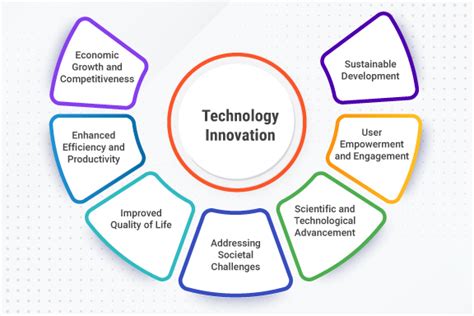Lamination technology has revolutionized the way we preserve and enhance documents, photos, and other paper-based materials. From protecting sensitive information to creating visually appealing displays, laminating has become an essential tool in various industries and households. In this article, we will delve into the world of laminating technology, exploring its history, innovations, and advancements that have transformed the way we work and communicate.
The Evolution of Lamination Technology
Lamination has been around for decades, but its early days were marked by manual processes and limited capabilities. The first laminating machines were introduced in the 1950s, using a combination of heat and pressure to bond plastic sheets together. However, these early machines were bulky, expensive, and often produced uneven results.
The 1980s saw the introduction of pouch laminators, which used pre-made laminating pouches to simplify the process. These machines were more user-friendly and produced better results, but they were still limited in their capabilities.
It wasn't until the 1990s that laminating technology began to advance rapidly. The introduction of roll laminators and automatic laminating machines enabled faster and more efficient lamination, making it accessible to a wider range of users.

Innovations in Laminating Technology
Today, laminating technology is more advanced than ever, with a range of innovations that have transformed the industry. Some of the key advancements include:
- Digital Lamination: Digital laminating machines use advanced sensors and algorithms to optimize the lamination process, producing high-quality results with minimal waste.
- Automated Lamination: Automatic laminating machines can laminate large quantities of material quickly and efficiently, making them ideal for high-volume applications.
- UV Lamination: UV laminating machines use ultraviolet light to cure the laminating adhesive, producing a strong and durable bond.
- Thermal Lamination: Thermal laminating machines use heat to activate the laminating adhesive, producing a clear and glossy finish.
Advantages of Laminating Technology
Laminating technology offers a range of benefits, including:
- Preservation: Lamination helps to preserve documents and photos by protecting them from damage, wear, and tear.
- Enhancement: Lamination can enhance the appearance of materials, making them more visually appealing and professional.
- Security: Lamination can be used to create secure documents, such as ID cards and passports, by incorporating advanced security features.
- Durability: Lamination can increase the durability of materials, making them more resistant to wear and tear.
Applications of Laminating Technology
Laminating technology has a wide range of applications, including:
- Education: Lamination is used in educational institutions to preserve and enhance teaching materials, such as worksheets and charts.
- Business: Lamination is used in businesses to create professional-looking documents, such as brochures and menus.
- Government: Lamination is used in government agencies to create secure documents, such as ID cards and passports.
- Art and Design: Lamination is used in the art and design world to create unique and visually appealing displays.

Types of Laminating Machines
There are several types of laminating machines available, each with its own unique features and benefits. Some of the most common types of laminating machines include:
- Pouch Laminators: Pouch laminators use pre-made laminating pouches to simplify the lamination process.
- Roll Laminators: Roll laminators use rolls of laminating film to laminate large quantities of material quickly and efficiently.
- Automatic Laminators: Automatic laminating machines can laminate large quantities of material quickly and efficiently, making them ideal for high-volume applications.
- UV Laminators: UV laminating machines use ultraviolet light to cure the laminating adhesive, producing a strong and durable bond.
Choosing the Right Laminating Machine
Choosing the right laminating machine depends on several factors, including the type of material you want to laminate, the volume of material you need to laminate, and the level of automation you require. Some things to consider when choosing a laminating machine include:
- Material type: Different laminating machines are designed for different types of materials, such as paper, card, or fabric.
- Volume: If you need to laminate large quantities of material, an automatic laminating machine may be the best option.
- Automation: If you want to automate the lamination process, look for a machine with advanced features, such as sensors and algorithms.

Future of Laminating Technology
The future of laminating technology is exciting, with advancements in digital lamination, automation, and sustainability. Some of the trends to watch out for include:
- Digital Lamination: Digital laminating machines are becoming increasingly popular, offering high-quality results with minimal waste.
- Automation: Automatic laminating machines are becoming more advanced, with features such as sensors and algorithms to optimize the lamination process.
- Sustainability: There is a growing trend towards sustainable lamination, with machines that use eco-friendly materials and minimize waste.
Conclusion
Laminating technology has come a long way since its early days, with innovations and advancements that have transformed the industry. From digital lamination to automation, there are a range of trends and technologies to watch out for in the future. Whether you're in education, business, government, or the art and design world, laminating technology has the potential to enhance and preserve your materials, making them more visually appealing and professional.






What is lamination technology?
+Lamination technology is a process that uses heat and pressure to bond plastic sheets together, creating a strong and durable bond.
What are the benefits of lamination?
+The benefits of lamination include preservation, enhancement, security, and durability.
What types of laminating machines are available?
+There are several types of laminating machines available, including pouch laminators, roll laminators, automatic laminators, and UV laminators.
